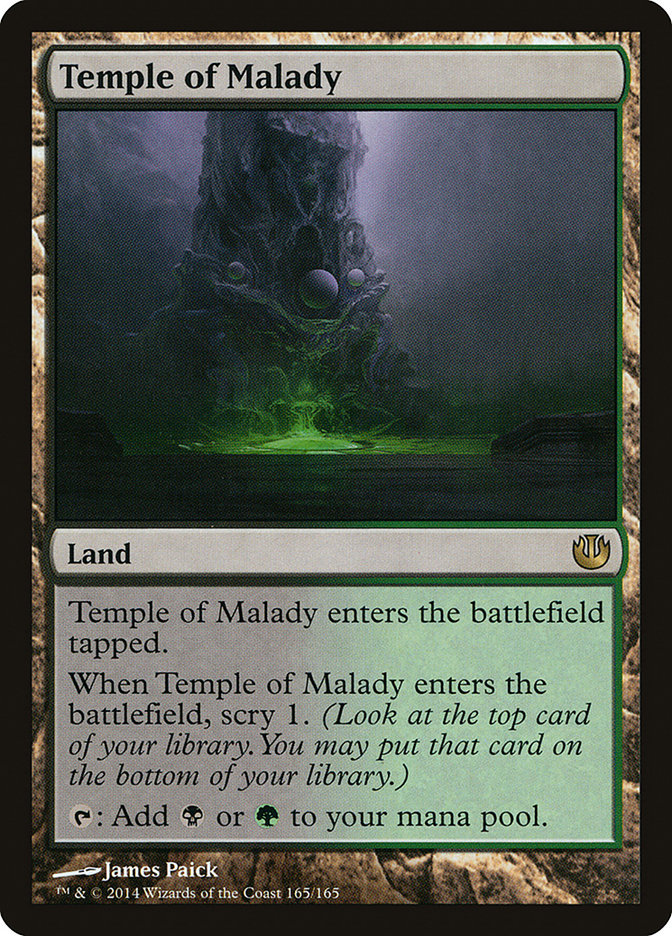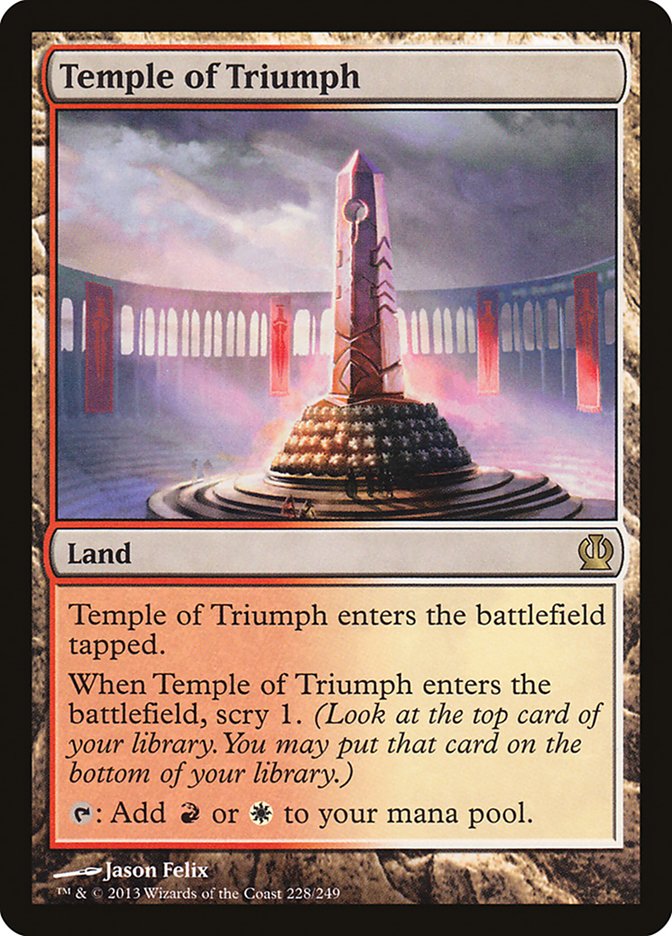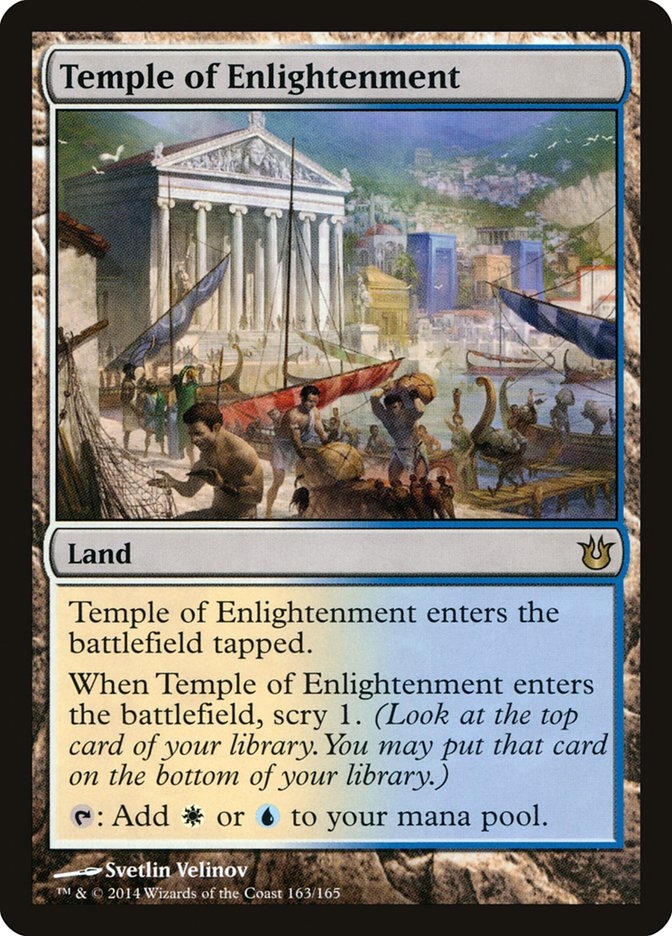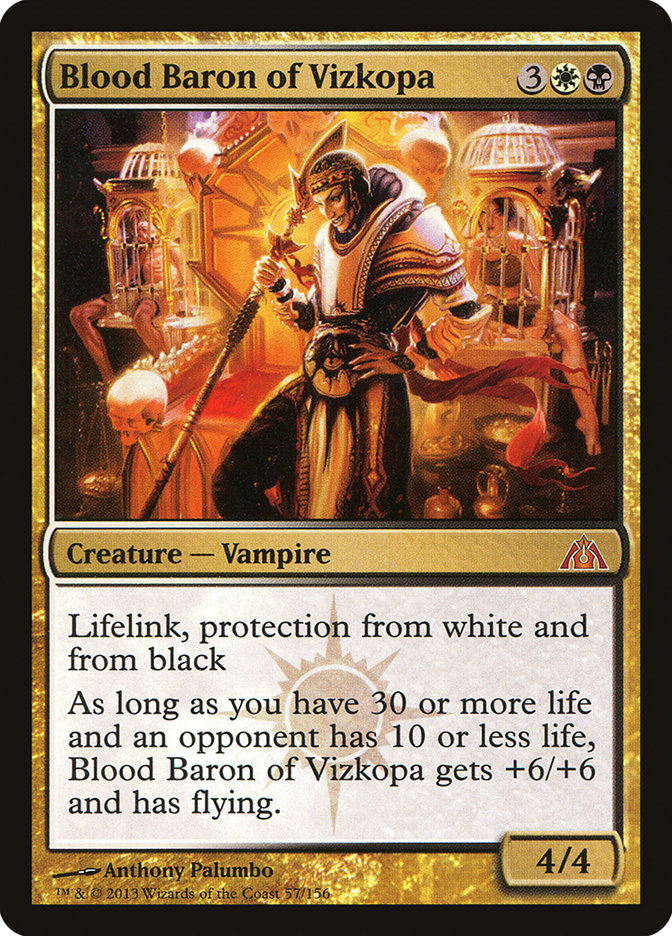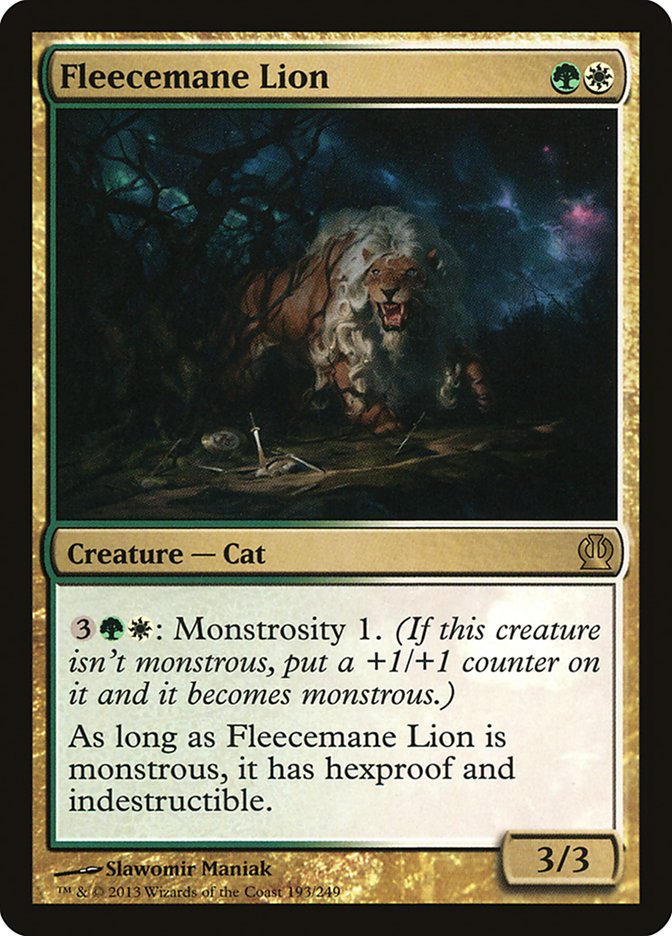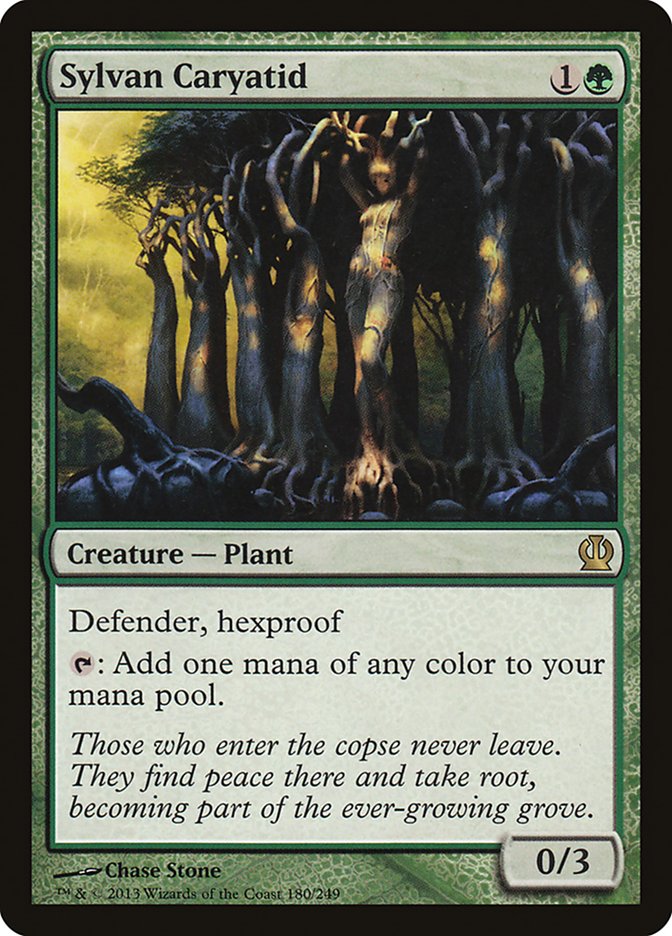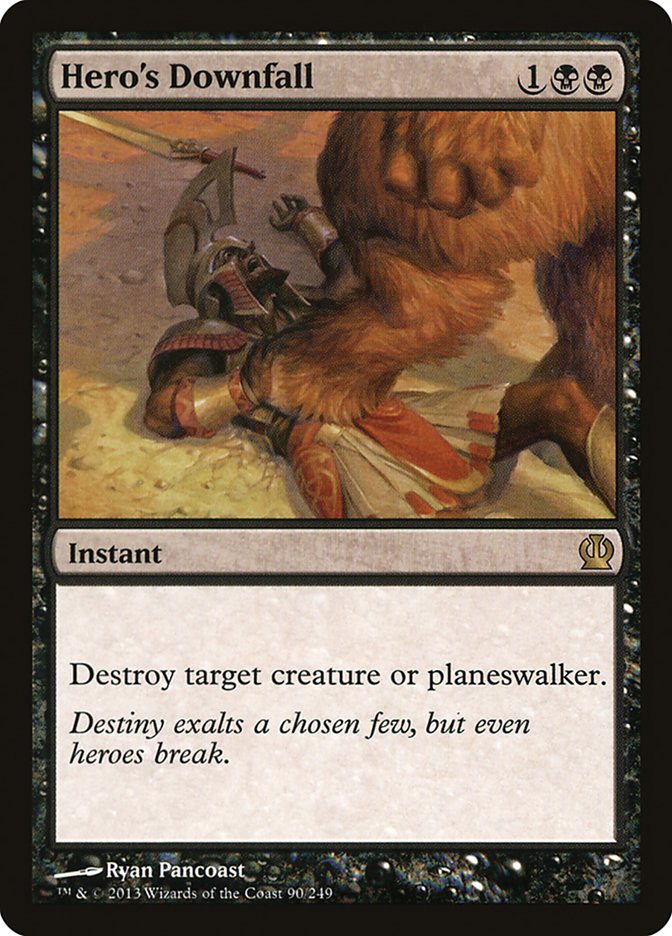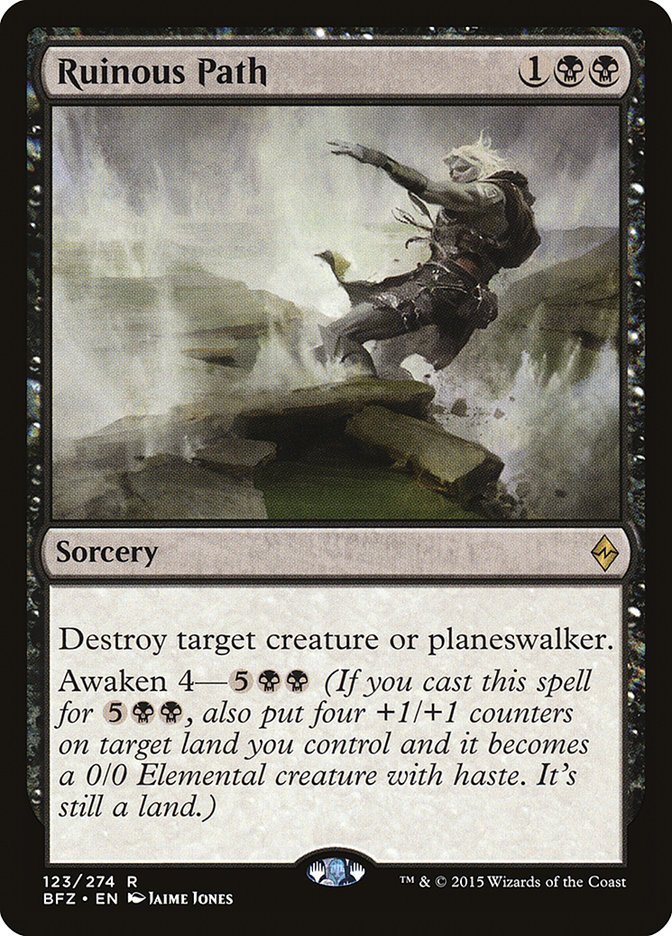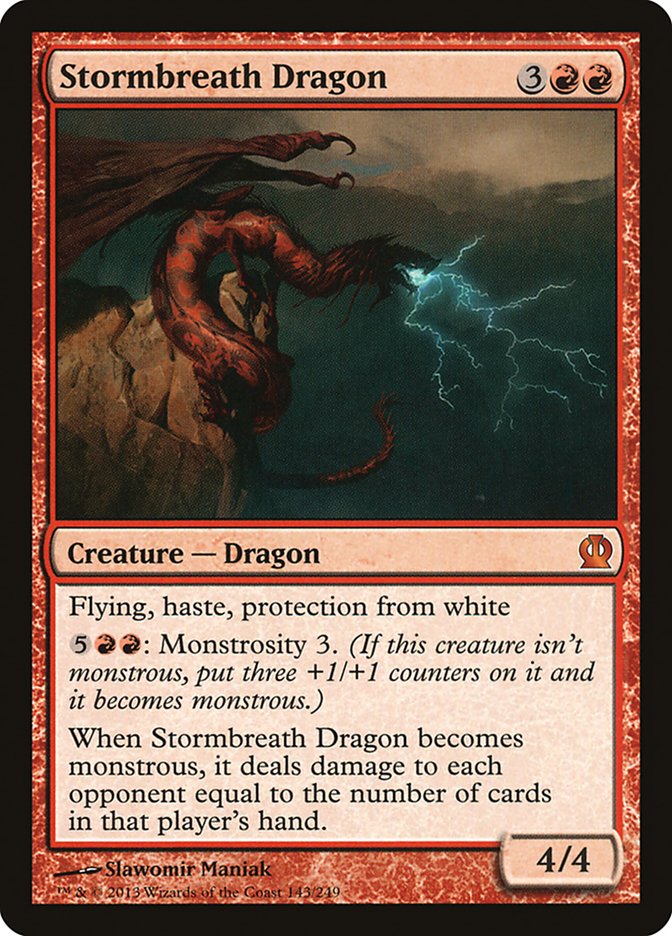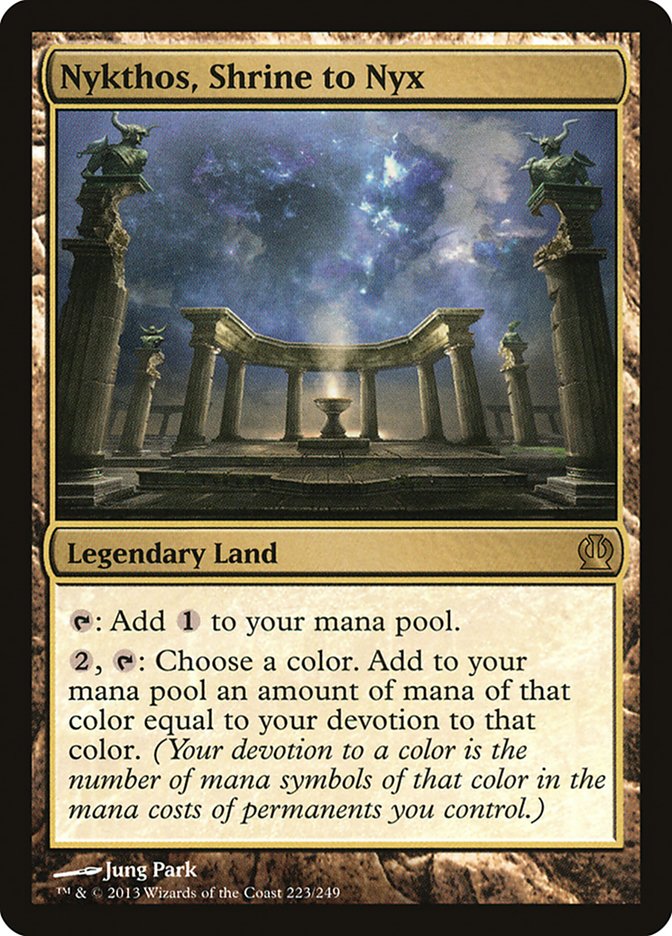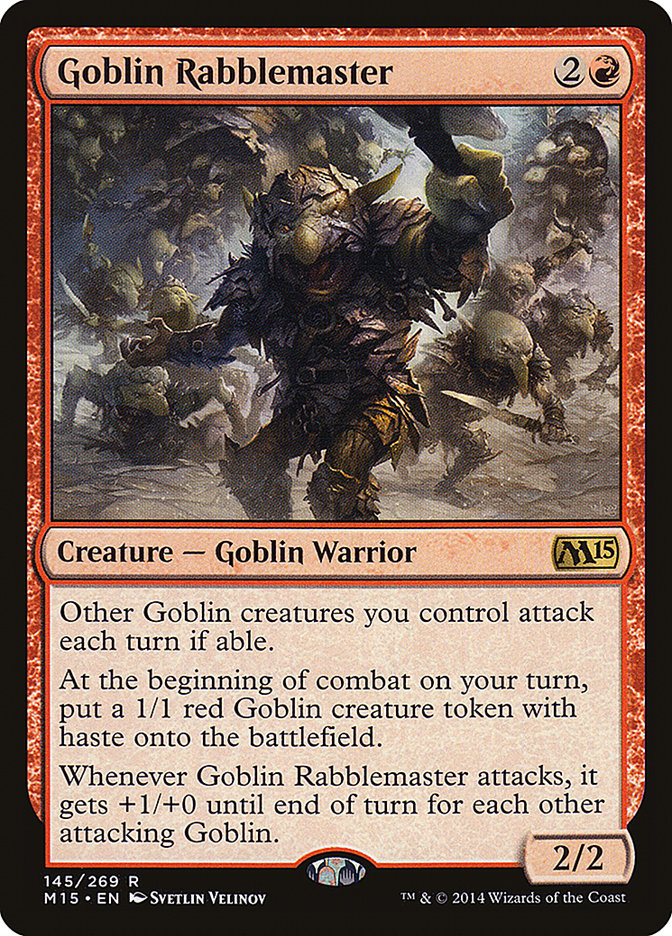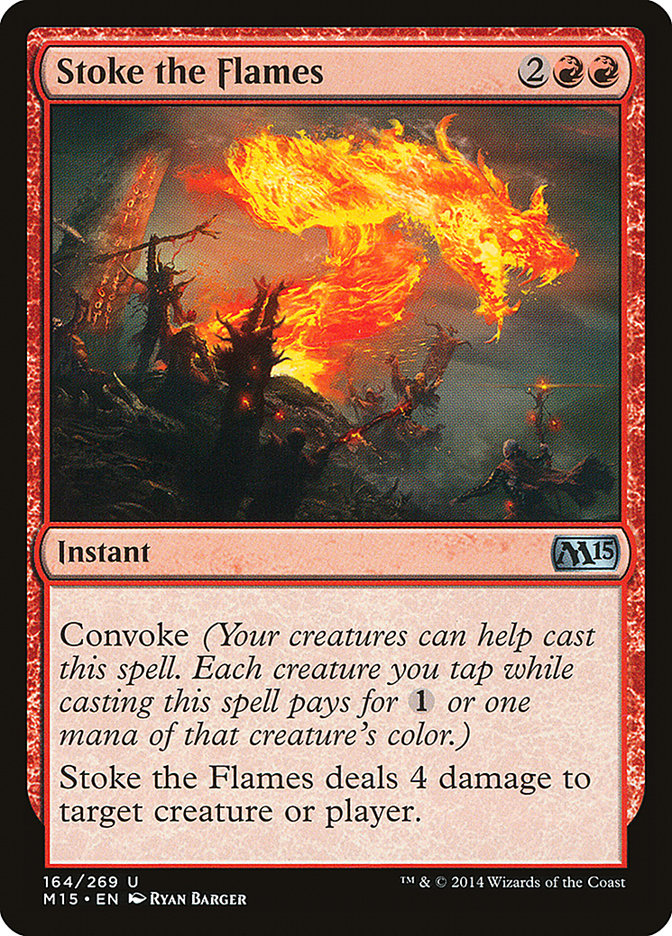With Battle for Zendikar spoilers in full swing, there are all kinds of fancy new toys everyone is excited to play with. But I wanted to take a
step back, as I always do around this time of year, and take a look at the cards that will no longer be with us once we get a chance to play with our new
presents. Magic is a game in which context is everything, and what isn’t in a format is often as important as what is.
The departure of Theros block and M15 will certainly cause some massive shifts in Standard. Those sets contain some of the most
fundamentally important cards upon which the format’s foundation has been built for years. Let’s take a look, shall we?
Speaking of foundations, it seems only right to begin with the cards that make casting all of the others possible. There is nothing more fundamental to a
format than the lands that are available and what kinds of mana shenanigans they allow. Much like Standard with Lorwyn block was defined by the
pairing of Reflecting Pool and filterlands to cast everything from Putrid Leech and Boggart Ram-Gang to Cryptic Command and Cruel Ultimatum in the same
deck, Standard with Theros has been largely defined by the draw-smoothing of the Temples.
Since their introduction, the Temples have found their way into nearly every deck that could support them. Last year, we even saw mono-color decks like
Mono-Black Devotion playing Temples simply for the scry effect since the added value of having some control over your draw steps was worth playing lands
that enter the battlefield tapped, even in a deck that could simply use basics.
The power of the Temples has been a huge factor in the success of many midrange and controlling decks during Theros block’s time in Standard.
Historically, non-blue midrange decks have often suffered from inconsistent draws due to a lack of deck manipulation alongside situational cards. But with
a plethora of Temples and their scry effects to smooth things out, a deck like Abzan can send Bile Blights and Ultimate Prices to the bottom of the deck
against control or keep them against aggro. People joke about how Siege Rhinos always seem to come in packs, but that’s due in no small part to the added
consistency that Temples provide.
On top of drawing the right spells, Temples also do wonders for hitting your land drops when you want to, and not when you don’t. During the reign of
Temples in Standard, the average deck has included noticeably more lands than in other similar formats. Look at the Abzan decks from the World Championship
top 4. Both Seth Manfield and Owen Turtenwald played 26 lands, which is at the high side of the expected range for a controlling midrange deck. But even
Paul Rietzl playing Abzan Aggro also played 26, which would be unthinkable in an aggressive deck most of the time. But the combination of the importance of
hitting your early colors and the ease with which you can avoid mana flooding thanks to playing seven Temples leads to the decision-making a lot more
sense.
With the Temples gone, I expect to see a decline in the power of midrange and control decks. Having the best available dual lands not only entering the
battlefield tapped but also helping decks with more situational cards has been a blow to aggressive decks throughout Theros‘s time in Standard.
Perhaps Battle for Zendikar will be beatdown’s time to shine, as one of the pillars of midrange falls with the Temples.
Speaking of pillars, Thoughtseize has been a defining card in Standard ever since it was reprinted in Theros. A certain someone might have predicted that Thoughtseize would produce metagames in which the top
decks were incredibly difficult to dethrone thanks to having a tool to preemptively handle whatever hate opponents might throw at them. Lo and behold,
Mono-Black Devotion and Abzan Control each managed to remain on the thrones of their respective metagames for nearly their entire time in Standard. When
even a card like Blood Baron of Vizkopa isn’t enough to keep Mono-Black from dominating a format, there’s certainly something afoot.
Thoughtseize has been the enemy of fun for nearly two years now, and frankly I could not be happier to see it gone. By providing a catch-all answer to
absolutely anything, it helps invalidate card text and make actual deckbuilding decisions much less interesting. The card was ostensibly included in Theros to give black a way to deal with enchantments in the enchantment-focused block, but amusingly, most of the powerful enchantments in the
block were either creatures or Gods that relied on creatures to turn on their devotion, which made black perhaps the best color to deal with them already
thanks to a plethora of removal options.
The departure of Thoughtseize is a good thing for everyone, because Magic is more fun when it’s not around, but especially for those looking to play combo
or synergy-based decks as well as any kind of ramp deck with a low threat count. I imagine that if Thoughtseize were in the same format as the Eldrazi, the
ancient world-devouring beings would end up starving to death since they’d just get end up getting discarded before their controller ever had the mana to
cast them.
Goodbye, Thoughtseize. And good riddance.
The departure of Courser of Kruphix has a lot of implications. Courser is taking with it all of the other enchantment creatures in the format, like Boon
Satyr, although Courser is clearly the one that has had the biggest impact on Standard. This means that the stock of enchantment removal cards like
Dromoka’s Command are going to go way down since one of the most backbreaking possible plays with it is no longer going to be possible. This is good news
for other enchantments, like Mastery of the Unseen, since it means your opponents are that much less likely to have incidental tools to actually destroy
your key cards.
As for the bigger picture, the departure of Courser of Kruphix is another big hit to green midrange decks. It has been Courser alongside the Temples that
really gave Abzan decks the ability to churn through their decks and not only find the specific cards they need but also generate a material advantage
along the way thanks to the ability to play extra lands from the top of the deck.
Courser has also been a huge thorn in the side of aggressive decks during its reign in Standard. Not only has its ubiquitous nature largely invalidated
creatures that can’t attack through Courser’s 2/4 body, but the incidental lifegain attached to playing lands has kept many players out of reach of death
by burn spells or evasive creatures.
Courser’s departure may help open the door to aggressive decks looking to attack on the ground, like white weenie, which have otherwise seen little to no
play in the current Standard. Who knows? Maybe a deck based around the new Kytheon may finally have what it takes when big green creatures aren’t
constantly standing in his way.
Speaking of big green creatures, Fleecemane Lion has been the gold standard for two-drops since it was introduced. To the surprise of absolutely no one, I
played Fleecemane Lion in all of the Standard Pro Tours since Portland last year, and it was always one of the best cards in my deck. A 3/3 body for two
mana is just a very efficient rate, especially when it comes with a built-in way to keep it relevant later in the game. The monstrous ability made Lion an
all-star not only in aggressive decks but even in control sideboards as a tool to either apply or defend against early pressure that could still remain a
force later on.
The departure of Fleecemane Lion is a sad day for the Selesnya Conclave, but it is cause for celebration for fans of little white or red men. Rampaging
Lions have ruined the lives of many Goblins and Soldiers the world over, and much like Courser of Kruphix, the universal presence of Fleecemane Lion – even
in the sideboard of Abzan Control decks – made it very difficult to play any kind of deck looking to win the game primarily by attacking with cheap
creatures.
If Fleecemane Lion has been among my greatest allies since its release, Elspeth has been my great enemy – which is kind of ironic, considering how well she
and I used to get along back when she was a Knight-Errant. Elspeth has been the finisher of choice for many midrange and control decks since she came to
Theros to do some God-slaying, and she has certainly made my life very difficult.
While Courser of Kruphix and Fleecemane Lion put the brakes on small aggressive ground creatures, Elspeth is the brick wall to both those and everything
bigger. Not only can she straight up kill creatures with four or more power with her minus ability, but her plus ability can generate an endless stream of
soldiers to stymie even a swarm of ground creatures.
The departure of Elspeth is great news for essentially every creature deck, but mostly to aggressively oriented midrange green decks. I’m certainly looking
forward to a world in which I can play midrange creatures with neither flying nor trample and actually have hopes that they may be able to someday connect
with my opponent’s face.
In fact, Elspeth was one of the major cards keeping Deathmist Raptor in check since her soldiers could hold off the removal-resilient Lizards virtually
indefinitely. Most of the key components of the various megamorph decks are surviving the rotation, while one of their greatest enemies will be gone. Are
we moving into a new jurassic era of dinosaur dominance? Maybe it’s time to call in Chris Pratt…
Okay, so maybe not all of the key components are still around. The rotation of Theros block and M15 means that the roster of mana
creatures available in Standard is taking a huge hit. Either Elvish Mystic or Sylvan Caryatid – and sometimes both – have been at the core of almost every
non-Abzan green deck for the past two years.
I am frankly happy to see Sylvan Caryatid go. The combination of a three toughness blocker plus mana production on a hexproof creature provided a
combination of guaranteed ramp and early defense that could be extremely frustrating to play against, especially playing an aggressive deck. Caryatid was a
card-carrying member of the “Suck It, Savannah Lion” club alongside Courser of Kruphix and Fleecemane Lion–I’m pretty sure it was the three of them who
really caused Kytheon to leave Theros, and the whole “planeswalker spark” story was just his excuse.
The loss of Elvish Mystic, however, makes me sad. Standard has pretty much universally had some kind of one-mana green accelerator since the dawn of time,
but it looks like the sun is finally setting on the ability to ramp into three-drops on turn 2. Magic Origins has no one cost accelerator, and we
have yet to see one in Battle for Zendikar. Given that Rattleclaw Mystic costs two mana–and I’m told at one point in development it was an 0/1
for G–I expect that Wizards has finally decided to end the days one-drop mana creatures.
I’ve built more decks in my life that have had Llanowar Elves or their descendants than those that did not, and it’s going to be weird moving forward
without that option. That said, I can understand the shift in developmental philosophy since the power level of any deck that hits its one-drop mana
creature is vastly higher than one that does not to the point that it can massively skew results. And a critical mass of mana production that starts on
turn 1 can lead to some pretty gross starts, as we’ve seen from green devotion decks over the past year or so.
If this developmental shift is in fact the case, I hope it comes with an increase in the power level of midrange green creatures, at least as far as how
they line up against removal effects. The saving grace of green creatures in the face of black removal has long been their ability to come out of the gates
quickly, but if Elvish Mystic and friends are no more, I hope we see green creatures that are better suited to line up against Hero’s Downfall and friends.
Speaking of which, I will shed no tears for the passing of Hero’s Downfall. Much like with Thoughtseize, I find that universally applicable removal effects
generally make deckbuilding decisions, and ultimately gameplay, less interesting. The only way to really “beat” Hero’s Downfall was to just play cheap
creatures or creatures that generate most of their value simply by entering the battlefield. I found this dynamic much less interesting than the Tragic
Slip versus Victim of Night versus Dreadbore versus Murder dynamic that existed during the Innistrad.
Then again, Hero’s Downfall isn’t really totally gone anyway; it’s just changed forms into Ruinous Path.
Ruinous Path does come at a much bigger cost, even if it takes the same mana to play, since sorcery speed makes it a lot harder to use optimally. This will
serve to make haste creatures better, particularly dash creatures, which are totally immune to ever getting hit by Ruinous Path, while Hero’s Downfall
could previously take them down. Is it time for Kolaghan to shine?
The shift from Hero’s Downfall to Ruinous Path is also good news to anyone trying to play a creature and protect it. A card like Stubborn Denial was
previously solid against Hero’s Downfall, but it’s a lot better against Ruinous Path because your opponent can’t play one copy during your end step, then
another on their turn. Sorcery speed effects leave players much more likely to end up bottlenecked on mana.
So haste creatures and Stubborn Denial are better, and it’s easier to attack on the ground? I’m looking forward to playing with Shaman of the Great Hunt,
myself…
Now this would sure be a great card to play after the rotation, huh? Sadly, Stormbreath Dragon will be going along with archenemy Hero’s Downfall. I’ll
miss you, buddy, even if I did mostly play G/W decks that lost to you during the time you were in Standard. I have to wonder if maybe some of the
borderline playable white fliers that I tried out in that time might be poised to make a comeback. Sunscorch Regent, anymore? Okay, maybe not.
Perhaps the biggest impact of Stormbreath Dragon’s departure is the impact on the playability of the Dragon-synergy cards like Draconic Roar. Stormbreath
Dragon was a key piece in the puzzle of having enough Dragons to enable Roar, and it leaves a conspicuous hole in the lineup next to Thunderbreak Regent.
Zendikar wasn’t really a Dragon-heavy plane as far as I remember, so we may have to wait until the next block to get some new tools for our Dragon decks.
Unless maybe Nissa, Gideon, and company all somehow manage to open some kind of planar portal to bring in a horde of Dragons to fight off the Eldrazi.
Because that’s what I’d do.
Call me, Wizards. I’ve got ideas.
While Elvish Mystic and Sylvan Caryatid were staple mana accelerators of even fair decks, no one ever did anything fair with Nykthos, Shrine to Nyx.
Nykthos was responsible for many of the most outrageously powerful plays in Standard over the past few years, from making dozens of manifests and gaining
hundreds of life in G/W Devotion to playing Dragonlord Atarka on the fourth turn in G/R to going monstrous with Polukranos for seven thousand or so in
either one.
I never did like what Nykthos did to games. It often made it feel like you had to use removal spells on literally anything your opponent played just to
keep them from doing something even more powerful the next turn. Mono-Black Devotion with countless removal and Thoughtseize, and U/W Control with Supreme
Verdict, did just that in last year’s Standard, which helped keep explosive Burning-Tree Emissary openings in check.
As an honest man who likes to attack with honest creatures, Nykthos has been something of a thorn in my side since it was printed since it was a central
feature of how many decks went over the top of everything I was doing. Nykthos was up there with Elspeth as far as cards that could just destroy an honest
creature deck’s chances to win; suddenly everything you do just doesn’t seem to matter against what your opponent is capable of. Perhaps with the two of
them gone, something like Savage Knuckleblade may finally have a chance to shine…
Last, but certainly not least, are these two aggressive buddies. Goblin Rabblemaster and Stoke the Flames were inseparable for a long time in Standard, but
when the format became hostile for the 2/2 Goblin, the four damage burn spell still managed to shine. Imagine that.
Moreso than Rabblemaster, Stoke has been a central feature of pretty much every aggressive red deck since the release of M15, to the point that it
was perhaps the most expensive in-print uncommon that I can ever remember. The convoke ability of Stoke made it fit perfectly not only with Rabblemaster
but in Jeskai Aggro decks with Mantis Rider, Hordeling Outburst/Dragon Fodder decks with Atarka’s Command, and especially in token decks with Jeskai
Ascendancy. The card allowed for players to throw incredible amounts of burn at their opponent’s face even with a low land count, allowing red players to
close out games much faster than they might otherwise.
While red decks dominated Pro Tour Magic Origins, they fell off quickly at the subsequent Grand Prix once players were prepared for them. But while they
may be losing two of their cornerstone cards with the rotation, don’t count red out just yet; it always has a habit of rising up at the start of a new
format while players are still tuning and experimenting with new cards. And if Dromoka’s Command takes a dip in popularity thanks to Courser going away and
Fleecemane Lion no longer giving players the same incentive to play G/W decks? Well, maybe Abbot of Keral Keep and friends will sneak up on everyone once
again…
What do you think? What are the most important cards leaving Standard with the rotation? What cards will you miss the most?

